目录
1. 梯度下降算法(迭代更新算法)—对回归参数的迭代
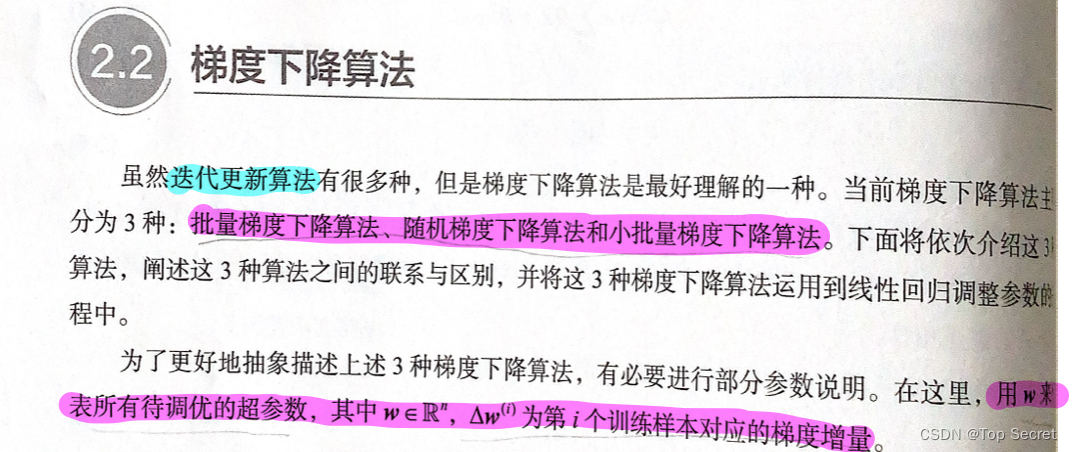
1.1 批量梯度下降算法
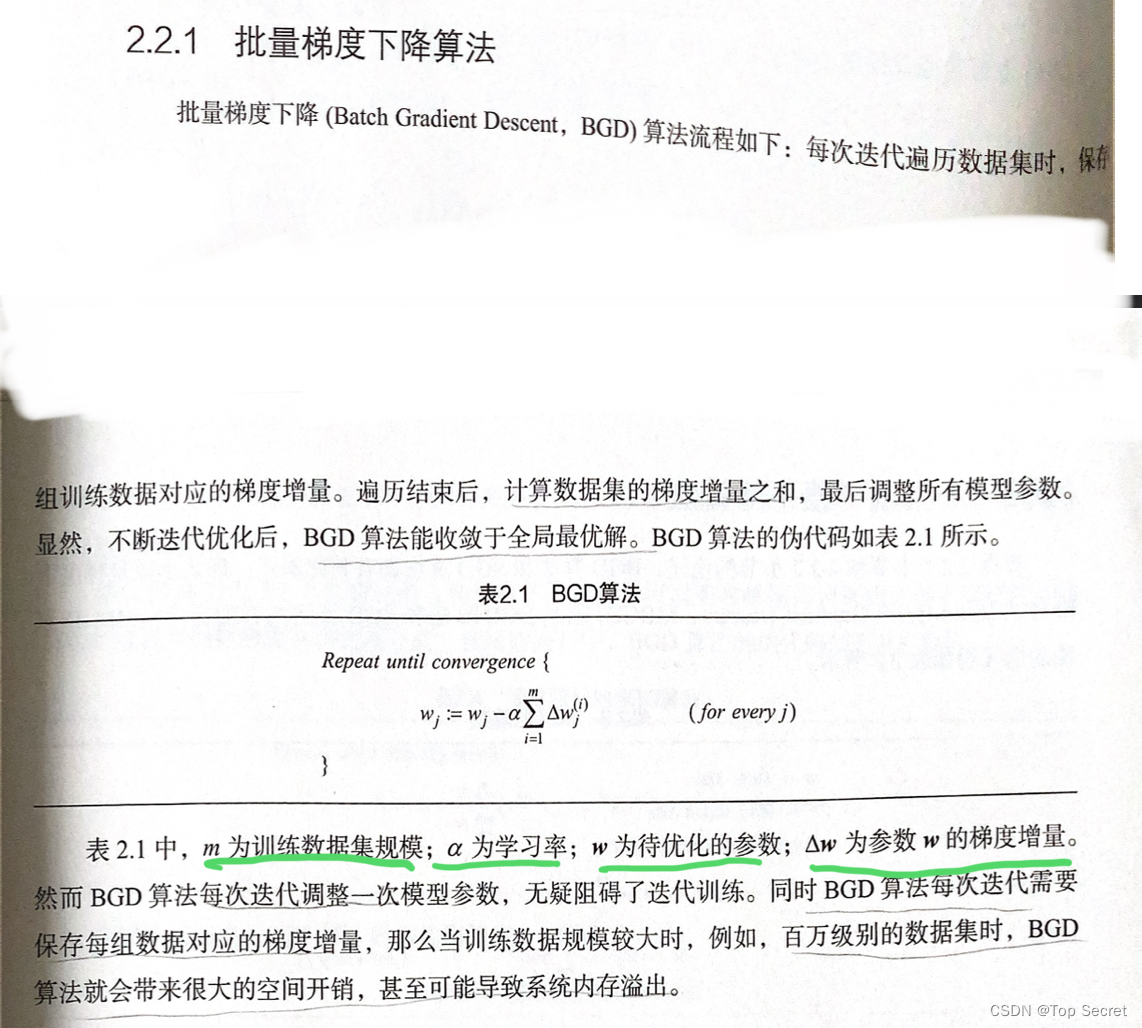
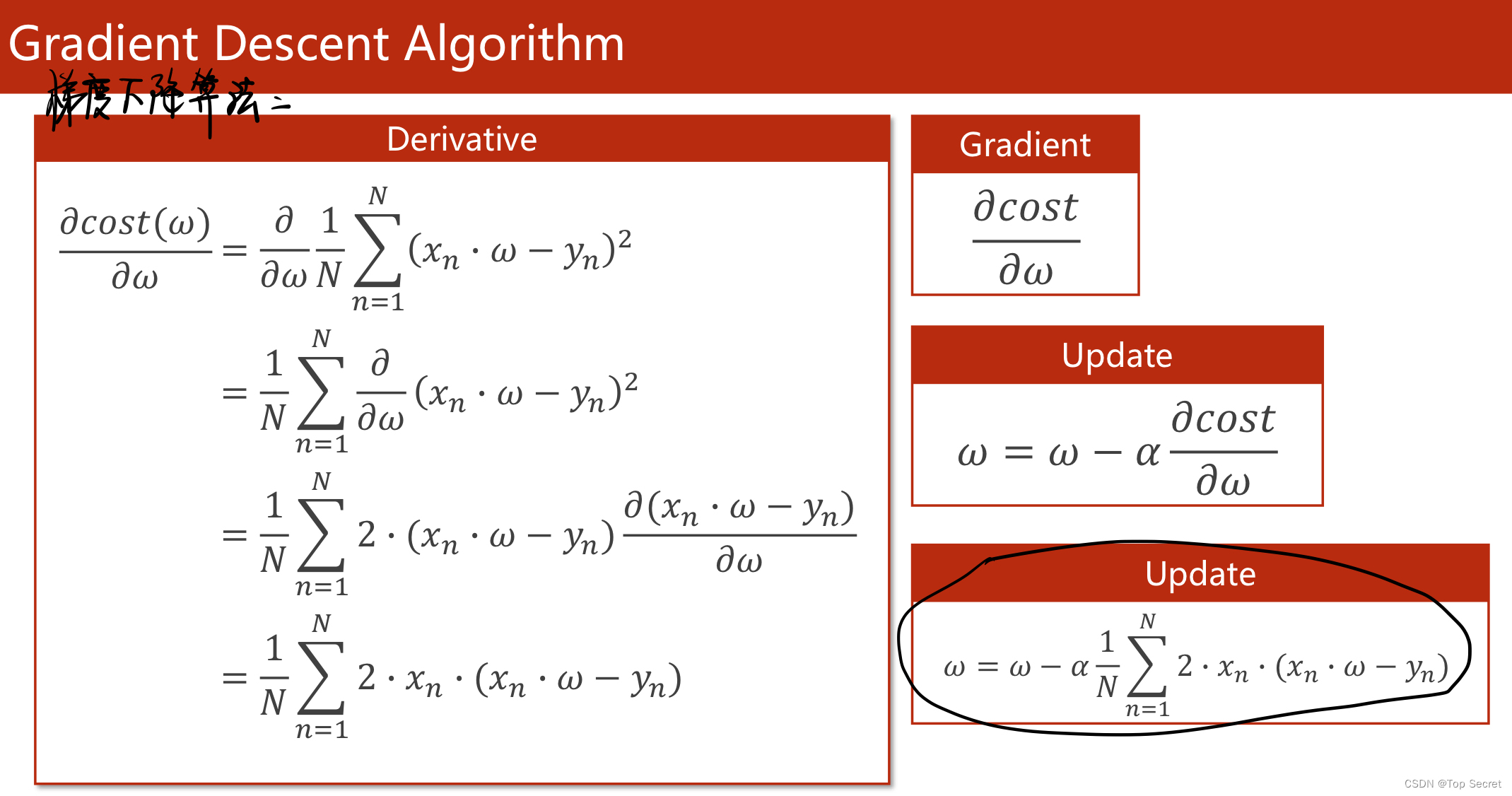
1.1.1 对模型y = w*x 的代码实现

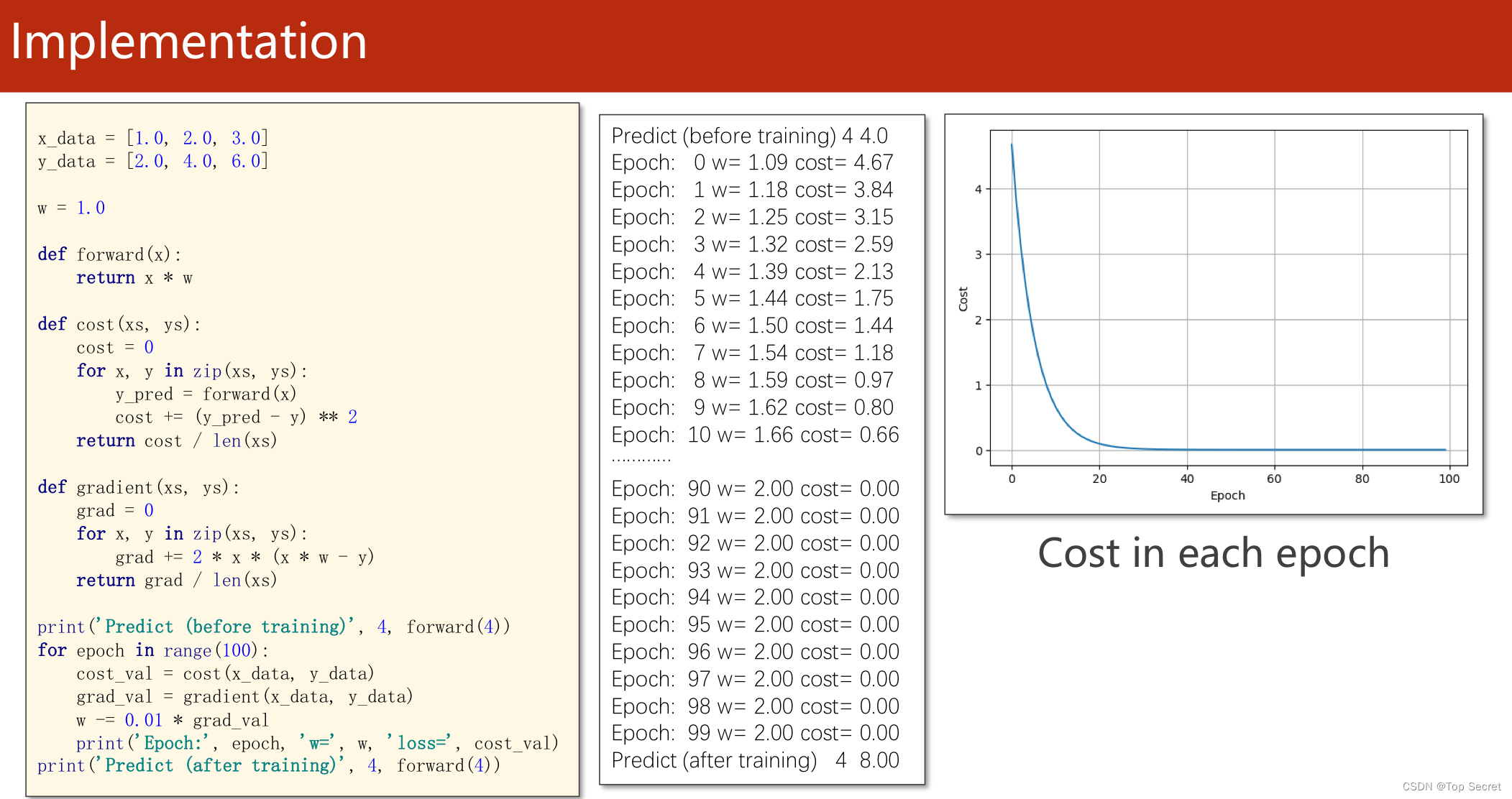
1.1.2 代码实现
import matplotlib.pyplot as plt
# prepare the training set
#准备数据集
x_data = [1.0, 2.0, 3.0]
y_data = [2.0, 4.0, 6.0]
# initial guess of weight
w = 1.0
# define the model linear model y = w*x
def forward(x):
return x * w
# define the cost function MSE
def cost(xs, ys):
cost = 0
for x, y in zip(xs, ys):
y_pred = forward(x)
cost += (y_pred - y) ** 2
return cost / len(xs)
# define the gradient function gd
def gradient(xs, ys):
grad = 0
for x, y in zip(xs, ys):
grad += 2 * x * (x * w - y)
return grad / len(xs)
epoch_list = []
cost_list = []
print('predict (before training)', 4, forward(4))
for epoch in range(100):
cost_val = cost(x_data, y_data) #caculate the sum of cost
grad_val = gradient(x_data, y_data) # caculate the gradient
w -= 0.01 * grad_val # 0.01 learning rate
print('epoch:', epoch, 'w=', w, 'loss=', cost_val)
#将每次训练更新的的损失存入列表中
epoch_list.append(epoch)
cost_list.append(cost_val)
print('predict (after training)', 4, forward(4))
plt.plot(epoch_list, cost_list)
plt.ylabel('cost')
plt.xlabel('epoch')
plt.show()运行结果:
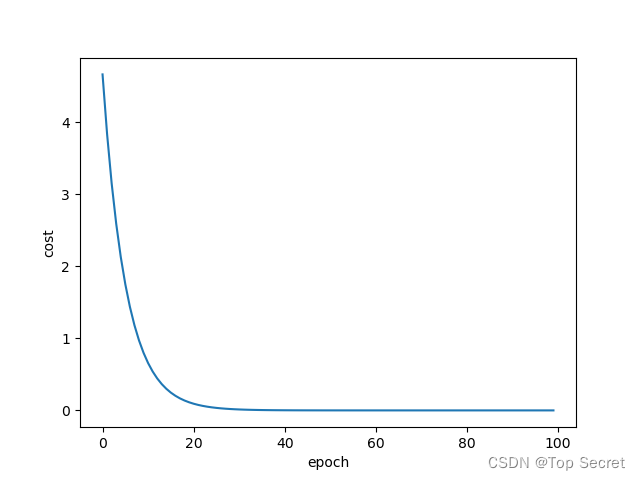
2. 随机梯度下降算法

随机梯度下降法和梯度下降法的主要区别在于:
1、损失函数由cost()更改为loss()。cost是计算所有训练数据的损失,loss是计算一个训练函数的损失。对应于源代码则是少了两个for循环。
2、梯度函数gradient()由计算所有训练数据的梯度更改为计算一个训练数据的梯度。
3、本算法中的随机梯度主要是指,每次拿一个训练数据来训练,然后更新梯度参数。本算法中梯度总共更新100(epoch)x3 = 300次。梯度下降法中梯度总共更新100(epoch)次。

2.1 SGD代码解读
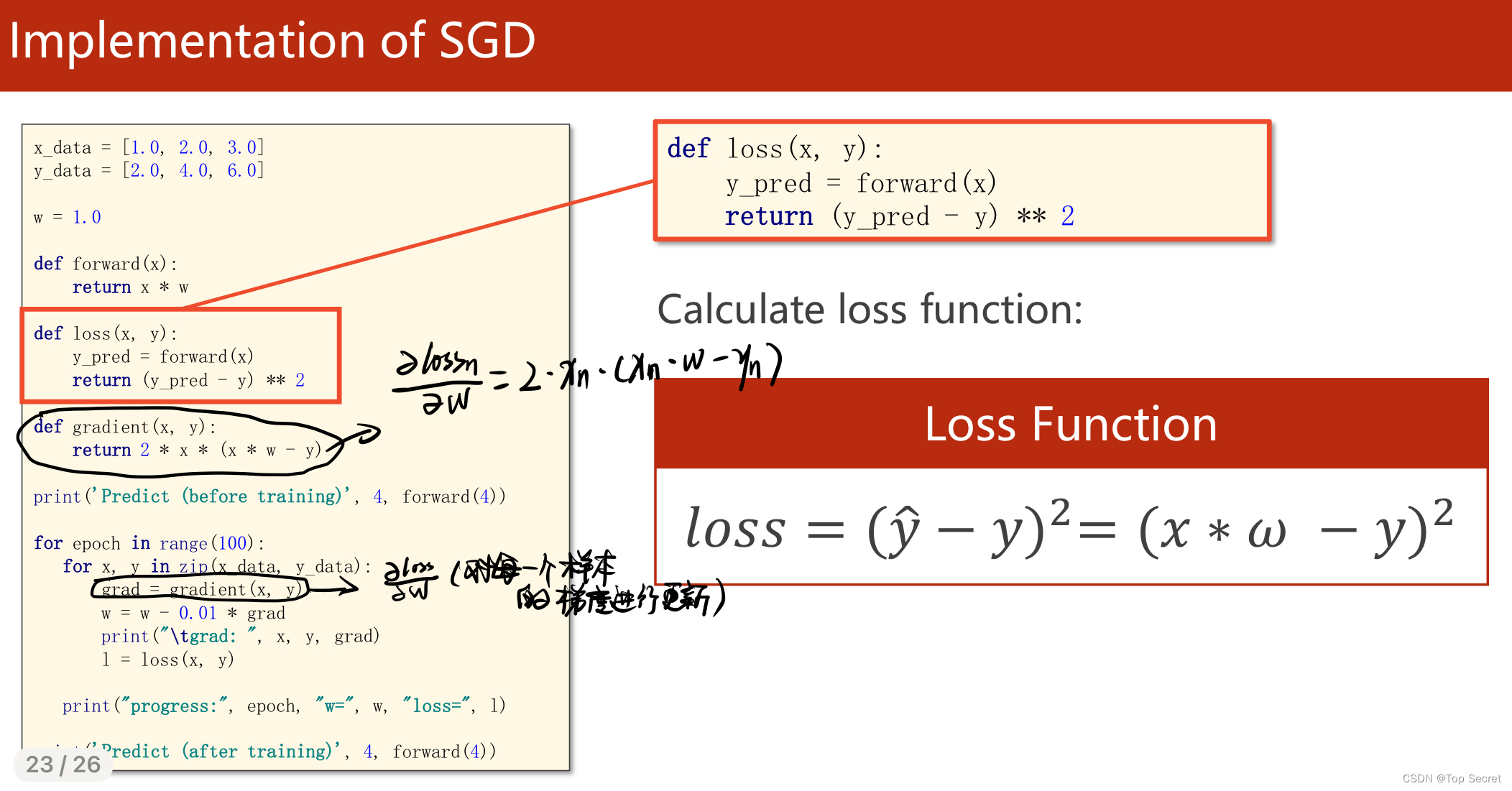
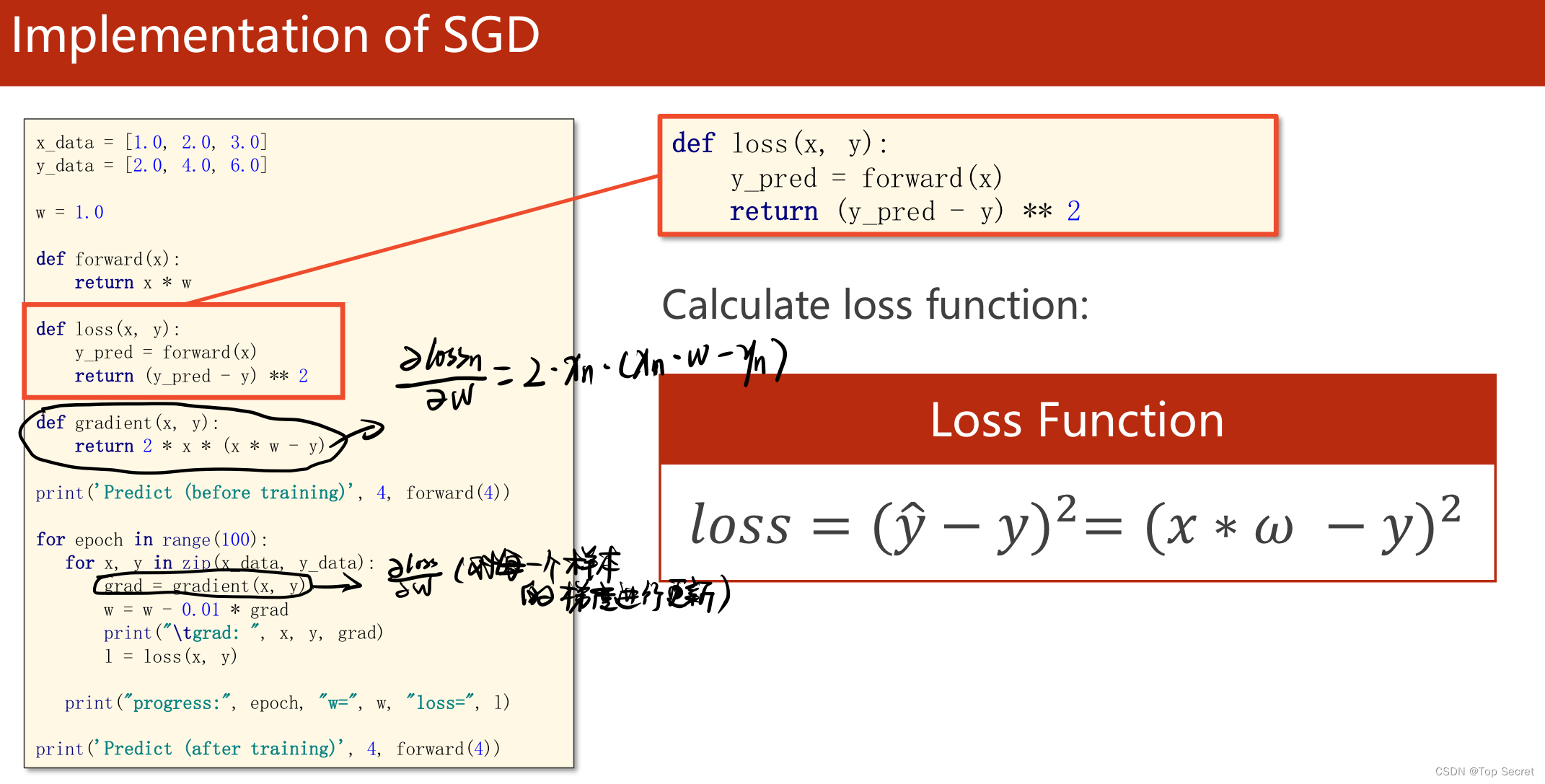
2.3 SGD程序实现
import matplotlib.pyplot as plt
x_data = [1.0, 2.0, 3.0]
y_data = [2.0, 4.0, 6.0]
#初始化参数w
w = 1.0
def forward(x):
return x * w
# calculate loss function(计算损失函数,随机选择样本,这里是区别于批量梯度下降的地方)
def loss(x, y):
y_pred = forward(x)
return (y_pred - y) ** 2
# define the gradient function sgd
def gradient(x, y):
return 2 * x * (x * w - y)
epoch_list = []
loss_list = []
print('predict (before training)', 4, forward(4))
for epoch in range(100):
for x, y in zip(x_data, y_data):
grad = gradient(x, y)
w = w - 0.01 * grad # update weight by every grad of sample of training set
print("\tgrad:", x, y, grad)
l = loss(x, y)
print("progress:", epoch, "w=", w, "loss=", l)
epoch_list.append(epoch)
loss_list.append(l)
print('predict (after training)', 4, forward(4))
plt.plot(epoch_list, loss_list)
plt.ylabel('loss')
plt.xlabel('epoch')
plt.show()3. 小批量梯度下降算法

4. 梯度下降算法之间的联系

5. 线性回归模型

6. 结合梯度下降算法的线性回归模型
利用梯度下降算法对线性回归参数进行调优;

7.正则方程(求线性回归参数)

7.1 正则方程与梯度下降算法的区别
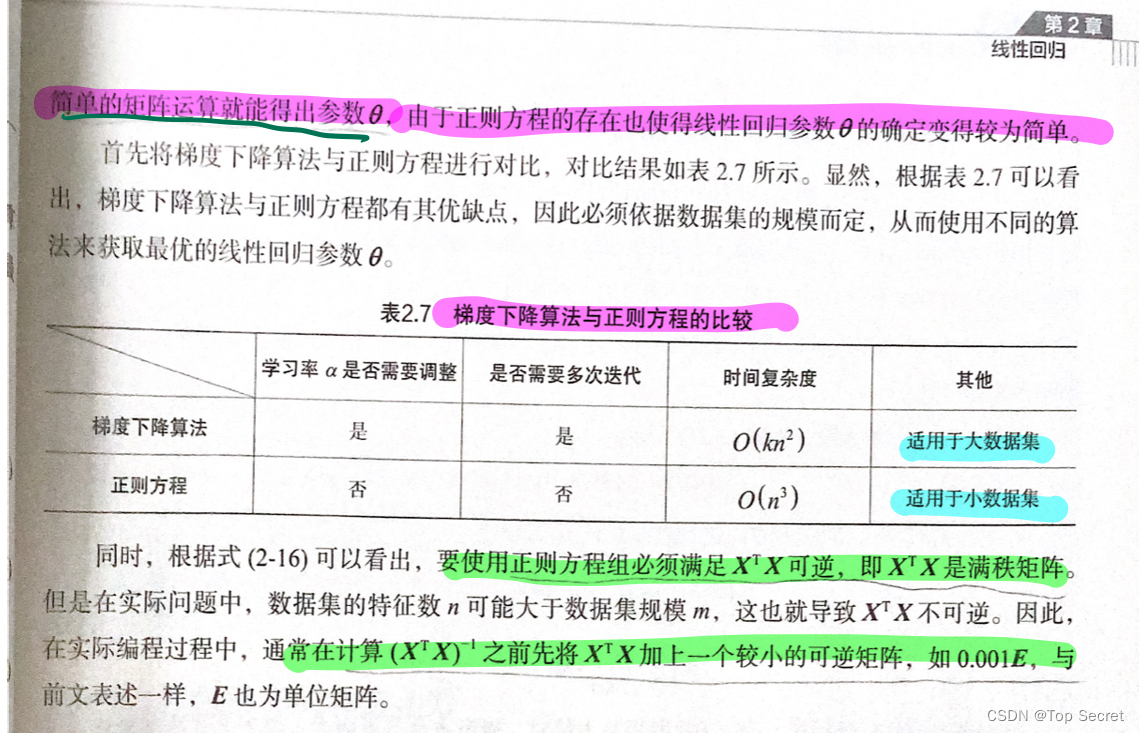
(待更新....)

























 1430
1430











 被折叠的 条评论
为什么被折叠?
被折叠的 条评论
为什么被折叠?










